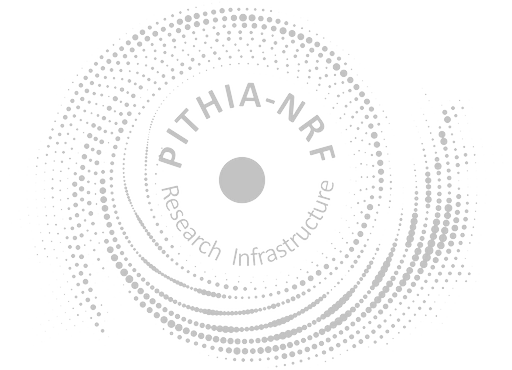<?xml version="1.0" encoding="UTF-8"?>
<ComputationCapabilities xmlns="https://metadata.pithia.eu/schemas/2.2" xmlns:xsi="http://www.w3.org/2001/XMLSchema-instance" xmlns:mrl="http://standards.iso.org/iso/19115/-3/mrl/1.0" xmlns:gco="http://standards.iso.org/iso/19115/-3/gco/1.0" xmlns:xlink="http://www.w3.org/1999/xlink" xsi:schemaLocation="https://metadata.pithia.eu/schemas/2.2 https://metadata.pithia.eu/schemas/2.2/pithia.xsd">
<!--
For those software tools that may be used by any data provider, use as namespace: pithia
-->
<identifier>
<PITHIA_Identifier>
<localID>ComputationCapabilities_NEDM2020</localID>
<namespace>dlr-so</namespace>
<version>1</version>
<creationDate>2024-08-12T12:00:00Z</creationDate>
<lastModificationDate>2024-08-12T12:00:00Z</lastModificationDate>
</PITHIA_Identifier>
</identifier>
<name>NEDM2020: ionosphere electron density</name>
<description>
The Neustrelitz Electron Density Model NEDM2020 can provide electron concentration at any given location and time in the ionosphere for trans-ionospheric applications (altitude range 80 – 20,000 km) based on user latitude, longitude, height, day of year, and universal time as inputs, with driving parameter F10.7. The empirical model is an amalgamation of altitude region specialized approaches for the plasmasphere, F layer, and E layer.
</description>
<!--
A list of the "capabilities" of the procedure: a description (dimensionality, units) for each observed property that this process can evaluate.
The dimensionalityInstance describes the data domain of the single instance of the measured observed property (1D.point, 1D.Profile, 2D.Map, 2D.image..).
The dimensionalityTimeline describes the timeline of the measured observed property (e.g. Timeseries, Animation,...).
-->
<capabilities>
<processCapability>
<name>Ionosphere electron density</name>
<observedProperty xlink:href="https://metadata.pithia.eu/ontology/2.2/observedProperty/ElectronDensity"/>
<dimensionalityInstance xlink:href="https://metadata.pithia.eu/ontology/2.2/dimensionalityInstance/1DPoints"/>
<units xlink:href="https://metadata.pithia.eu/ontology/2.2/unit/10_12m-3"/>
</processCapability>
</capabilities>
<dataLevel xlink:href="https://metadata.pithia.eu/ontology/2.2/dataLevel/L4"/>
<type xlink:href="https://metadata.pithia.eu/ontology/2.2/computationType/EmpiricalModel"/>
<version/>
<softwareReference/>
<!-- Use ESPAS-inspired design of processingInput and InputOutput types to specify all required input parameters for this computation -->
<processingInput>
<InputOutput>
<!-- Provide only name and description, no values: this field describes the process, not the observation result.
If this processingInput is a parameter that has specific value for the whole collection, use om:parameter field of the DataCollection
document to define such NamedValue, point its NamedValue.name to this name below, and use NamedValue.value to set the value -->
<name>F10.7 solar flux [sfu] (optional)</name>
<description>
<mrl:LE_Source>
<mrl:description><gco:CharacterString>
F10.7 in solar flux units. This value is optional: Not setting it will instruct the server to try and fetch the F10.7 value for the given datetime automatically.
</gco:CharacterString></mrl:description>
</mrl:LE_Source>
</description>
</InputOutput>
</processingInput>
<processingInput>
<InputOutput>
<!-- Provide only name and description, no values: this field describes the process, not the observation result.
If this processingInput is a parameter that has specific value for the whole collection, use om:parameter field of the DataCollection
document to define such NamedValue, point its NamedValue.name to this name below, and use NamedValue.value to set the value -->
<name>Receiver altitude [km]</name>
<description>
<mrl:LE_Source>
<mrl:description><gco:CharacterString>
Altitude of the receiver in kilometers.
</gco:CharacterString></mrl:description>
</mrl:LE_Source>
</description>
</InputOutput>
</processingInput>
<processingInput>
<InputOutput>
<!-- Provide only name and description, no values: this field describes the process, not the observation result.
If this processingInput is a parameter that has specific value for the whole collection, use om:parameter field of the DataCollection
document to define such NamedValue, point its NamedValue.name to this name below, and use NamedValue.value to set the value -->
<name>Receiver latitude [deg]</name>
<description>
<mrl:LE_Source>
<mrl:description><gco:CharacterString>
Latitude of the receiver in degrees (signed decimal number).
</gco:CharacterString></mrl:description>
</mrl:LE_Source>
</description>
</InputOutput>
</processingInput>
<processingInput>
<InputOutput>
<!-- Provide only name and description, no values: this field describes the process, not the observation result.
If this processingInput is a parameter that has specific value for the whole collection, use om:parameter field of the DataCollection
document to define such NamedValue, point its NamedValue.name to this name below, and use NamedValue.value to set the value -->
<name>Receiver longitude [deg]</name>
<description>
<mrl:LE_Source>
<mrl:description><gco:CharacterString>
Longitude of the receiver in degrees (signed decimal number).
</gco:CharacterString></mrl:description>
</mrl:LE_Source>
</description>
</InputOutput>
</processingInput>
<processingInput>
<InputOutput>
<!-- Provide only name and description, no values: this field describes the process, not the observation result.
If this processingInput is a parameter that has specific value for the whole collection, use om:parameter field of the DataCollection
document to define such NamedValue, point its NamedValue.name to this name below, and use NamedValue.value to set the value -->
<name>Satellite altitude [km]</name>
<description>
<mrl:LE_Source>
<mrl:description><gco:CharacterString>
Altitude of the satellite in kilometers.
</gco:CharacterString></mrl:description>
</mrl:LE_Source>
</description>
</InputOutput>
</processingInput>
<processingInput>
<InputOutput>
<!-- Provide only name and description, no values: this field describes the process, not the observation result.
If this processingInput is a parameter that has specific value for the whole collection, use om:parameter field of the DataCollection
document to define such NamedValue, point its NamedValue.name to this name below, and use NamedValue.value to set the value -->
<name>Satellite latitude [deg]</name>
<description>
<mrl:LE_Source>
<mrl:description><gco:CharacterString>
Latitude of the satellite in degrees (signed decimal number).
</gco:CharacterString></mrl:description>
</mrl:LE_Source>
</description>
</InputOutput>
</processingInput>
<processingInput>
<InputOutput>
<!-- Provide only name and description, no values: this field describes the process, not the observation result.
If this processingInput is a parameter that has specific value for the whole collection, use om:parameter field of the DataCollection
document to define such NamedValue, point its NamedValue.name to this name below, and use NamedValue.value to set the value -->
<name>Satellite longitude [deg]</name>
<description>
<mrl:LE_Source>
<mrl:description><gco:CharacterString>
Longitude of the satellite in degrees (signed decimal number).
</gco:CharacterString></mrl:description>
</mrl:LE_Source>
</description>
</InputOutput>
</processingInput>
<processingInput>
<InputOutput>
<!-- Provide only name and description, no values: this field describes the process, not the observation result.
If this processingInput is a parameter that has specific value for the whole collection, use om:parameter field of the DataCollection
document to define such NamedValue, point its NamedValue.name to this name below, and use NamedValue.value to set the value -->
<name>Date-Time [ISO]</name>
<description>
<mrl:LE_Source>
<mrl:description><gco:CharacterString>
Date and time of interest given as an ISO 8601 compliant string.
</gco:CharacterString></mrl:description>
</mrl:LE_Source>
</description>
</InputOutput>
</processingInput>
<algorithm/>
</ComputationCapabilities>

